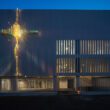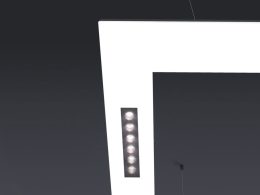In the dynamic lighting world, we face a growing gap between lighting science and technological control systems. This dilemma is more than a simple mismatch; it is a barrier that limits our ability to design lighting environments that truly optimize human well-being and space functionality.
Modern lighting science has significantly advanced our understanding of how light affects our circadian rhythms and overall well-being. Studies have shown that lighting can have a profound impact on our health and mood. Lighting control systems should be the bridge between this science and real projects. However, these systems usually adjust CCTs and brightness, while current scientific studies focus more on how the light spectrum affects people, using parameters that consider the circadian impact to evaluate light more accurately and effectively.
The lack of technological compatibility, complexity in installation, and the absence of uniform standards in the industry have further complicated this integration. Instead of translating scientific advances into practical, automated configurations, we are faced with non-compliance that hinders the effectiveness of our lighting solutions.
KUMUX system bridging the gap between Science and technology
This is where KUMUX comes into play, an innovative software that has been specifically designed to close this gap. By using scientific knowledge to develop lighting control configurations aligned with scientific parameters of circadian impact, KUMUX offers an effective solution. This approach not only facilitates automation of the control system but also ensures that the lighting has the desired impact on users, thus improving quality and environmental well-being.
KUMUX marks an important milestone in the evolution of lighting. As it not only represents a breakthrough in the integration of science and technology but also sets a new standard for the industry. The ability to integrate science with technology not only enhances the lighting experience but also enables the proven health effects of light to be achieved.
For lighting professionals, it is crucial to adopt solutions like KUMUX that address these disparities. As we move towards a more sustainable and humane future, we must be prepared to take advantage of the tools that allow us to design healthier, more efficient environments adapted to human needs. The gap between lighting science and control systems is real, but with innovations like KUMUX, we are on the right path to bridging it.








